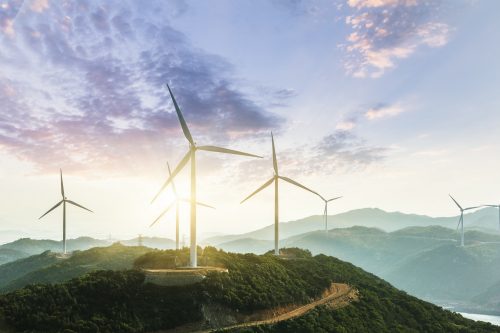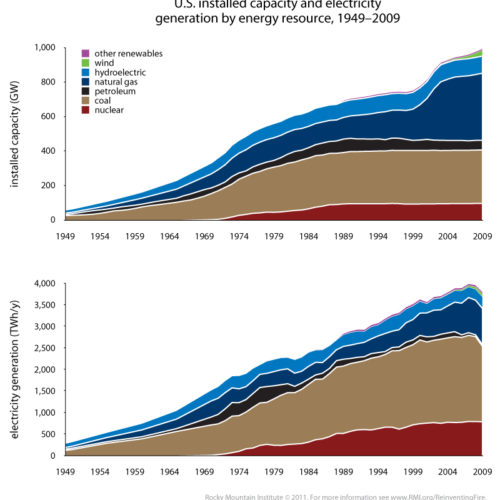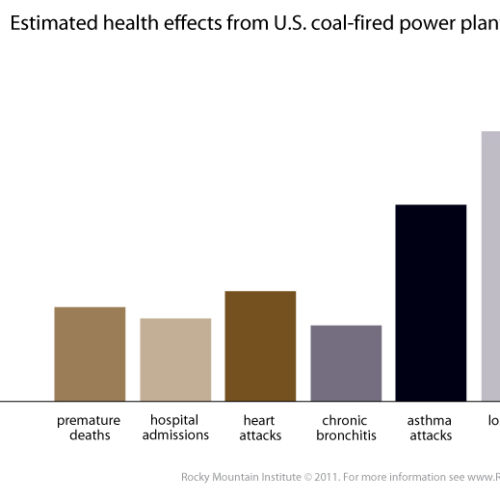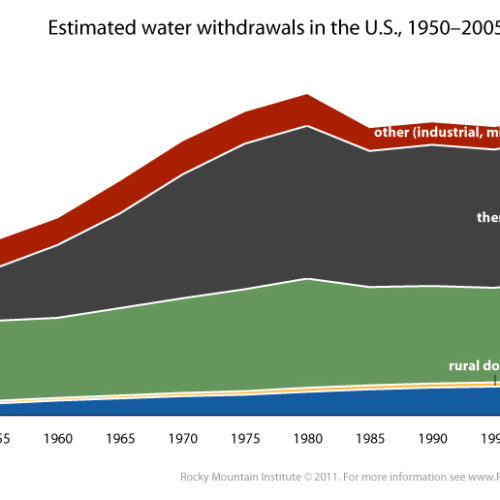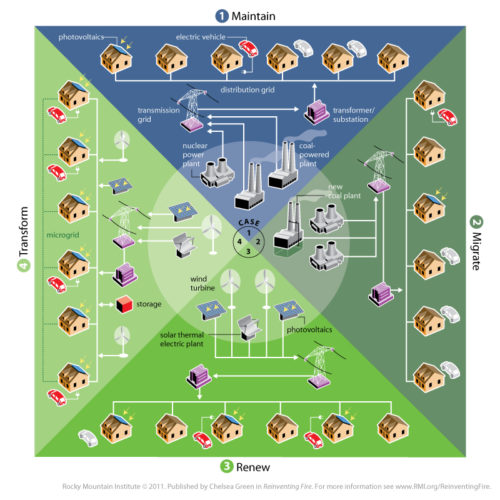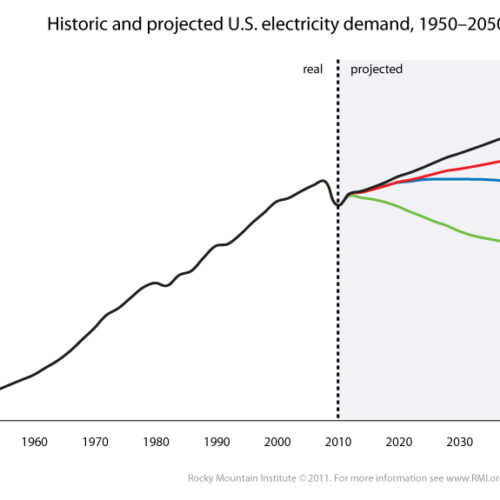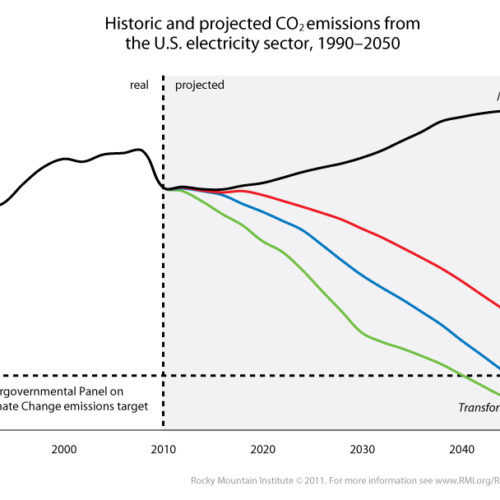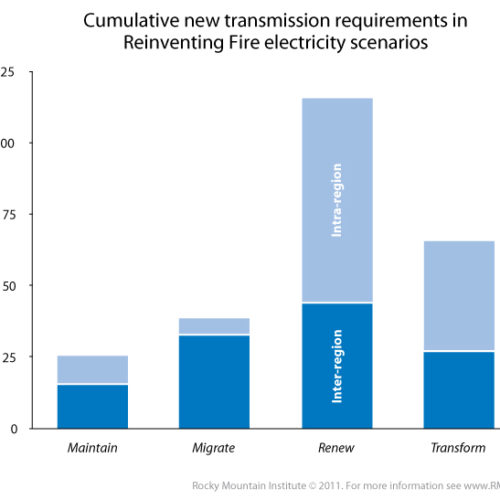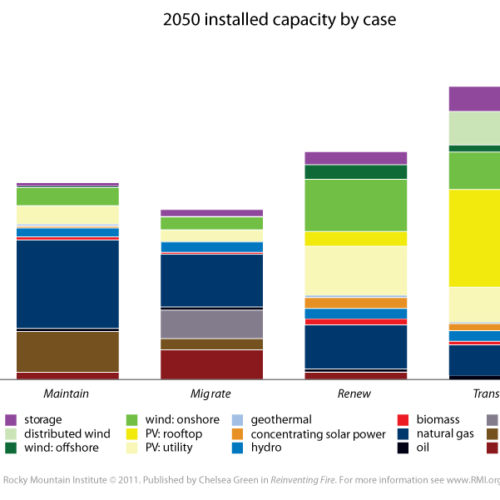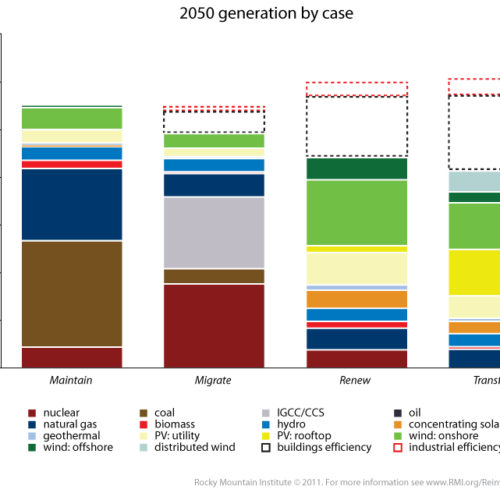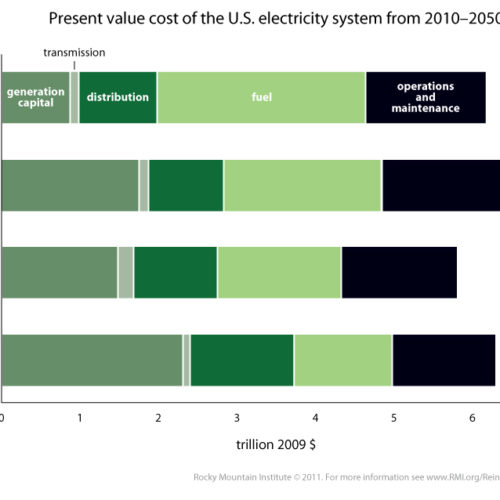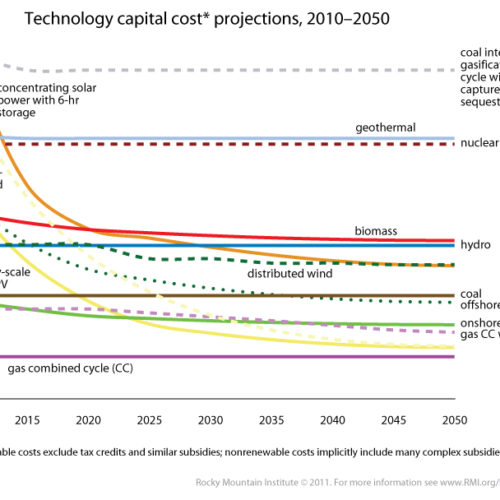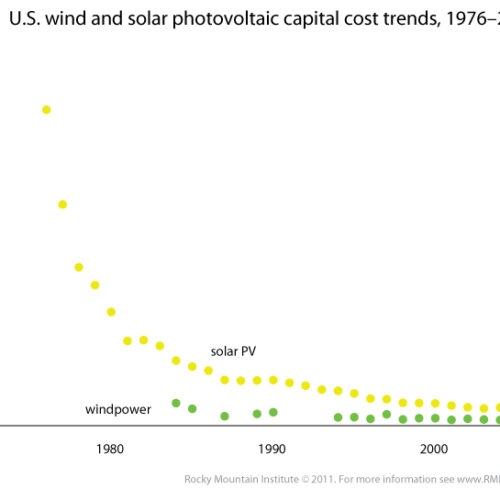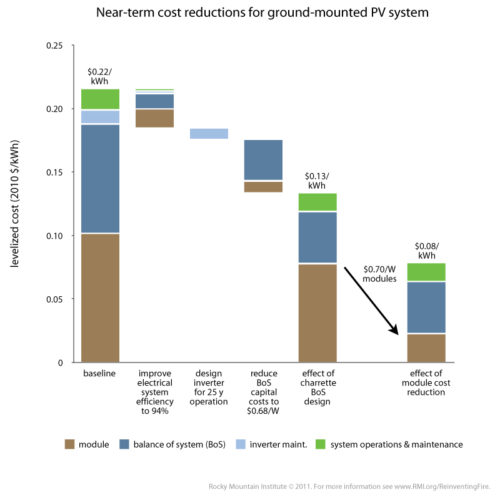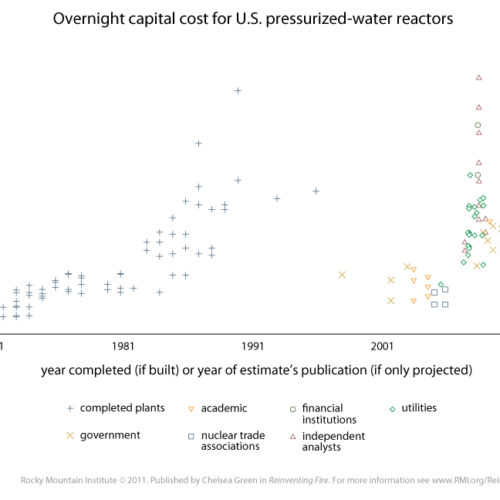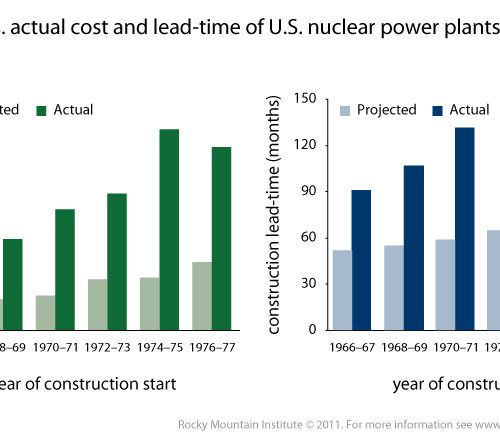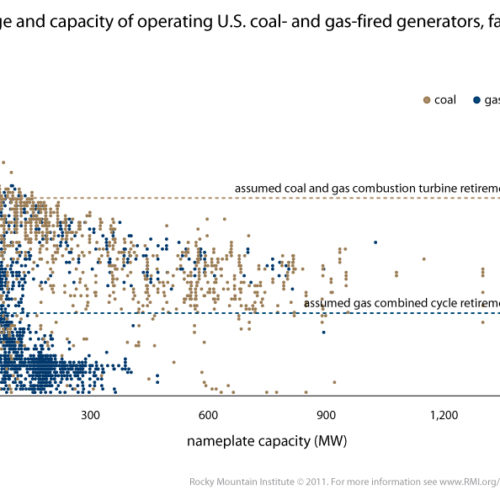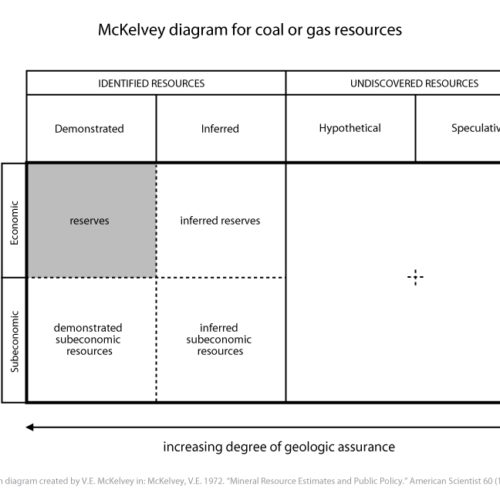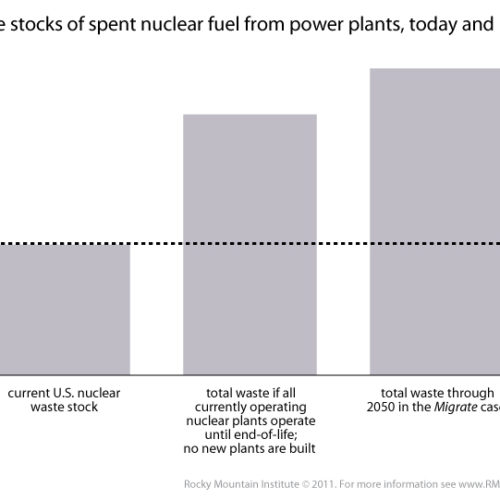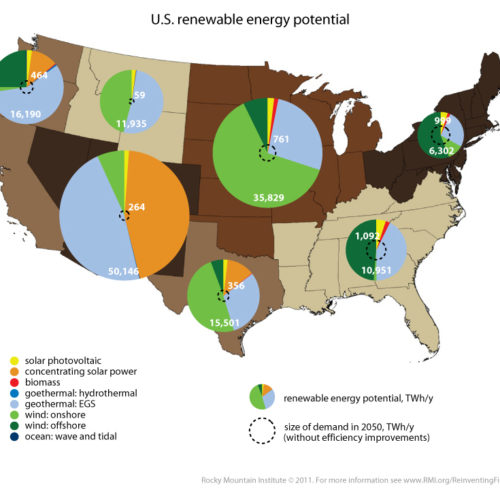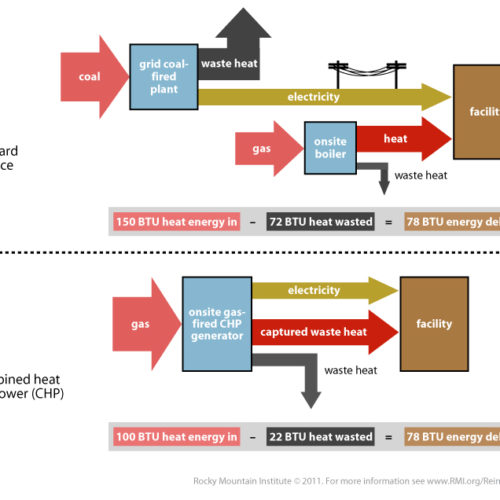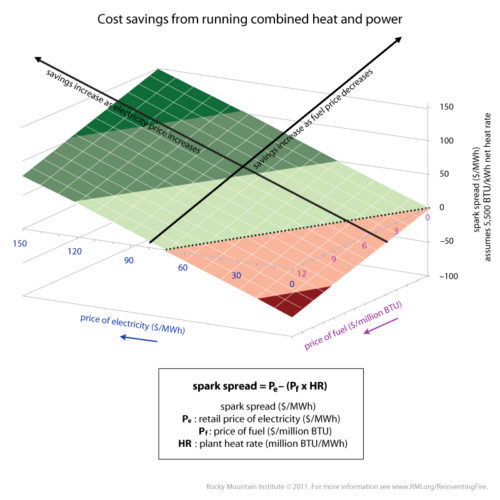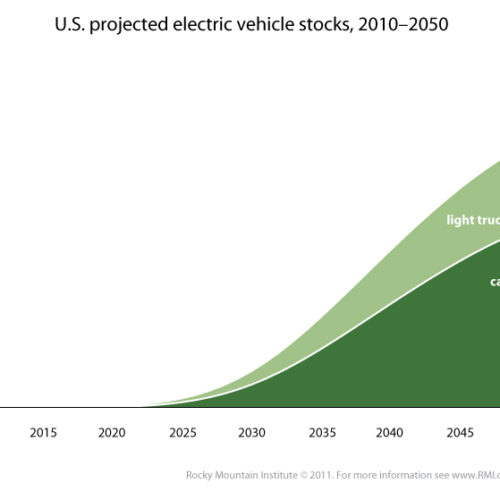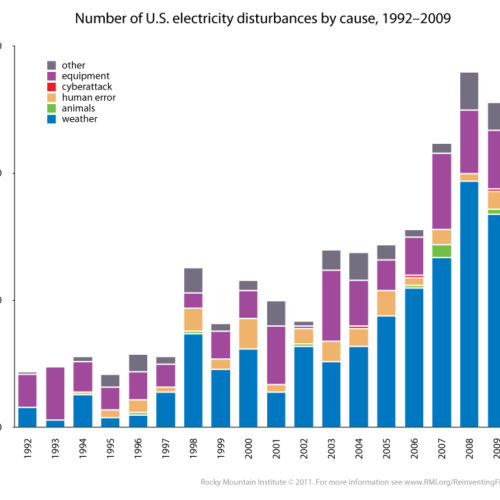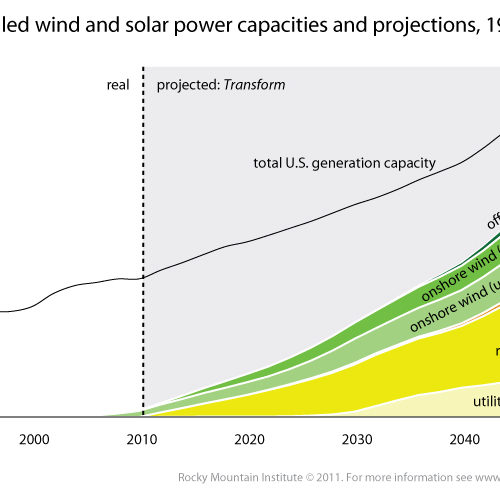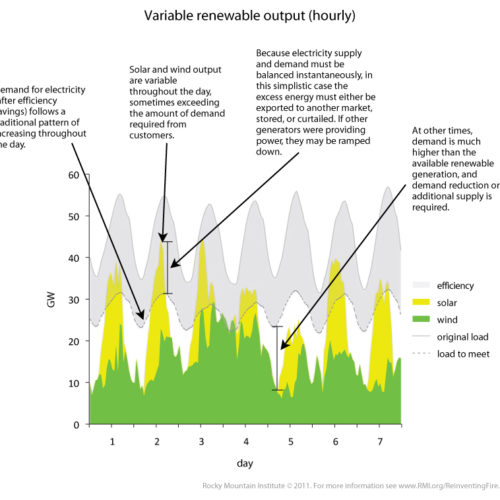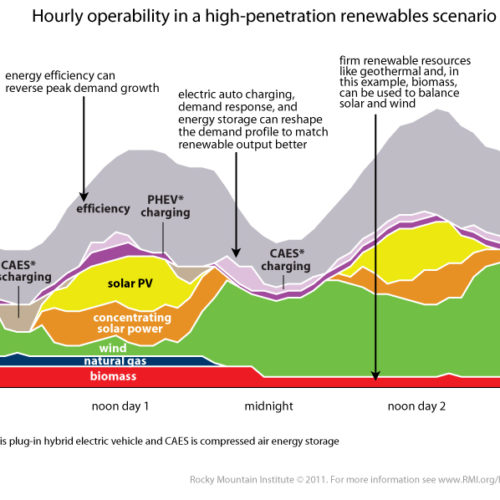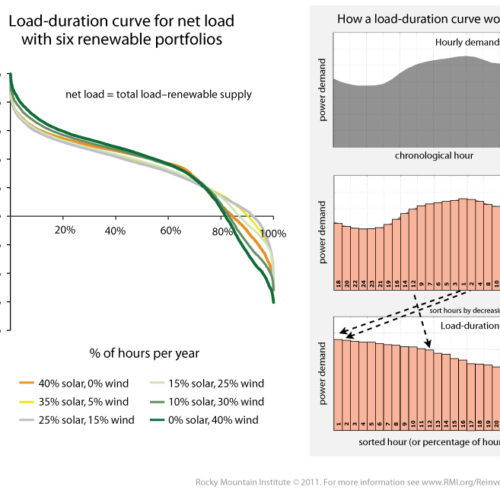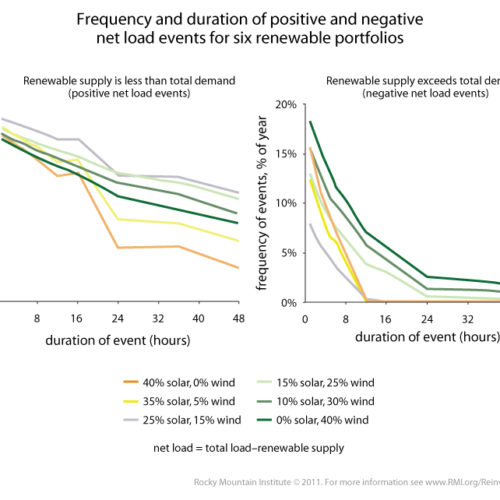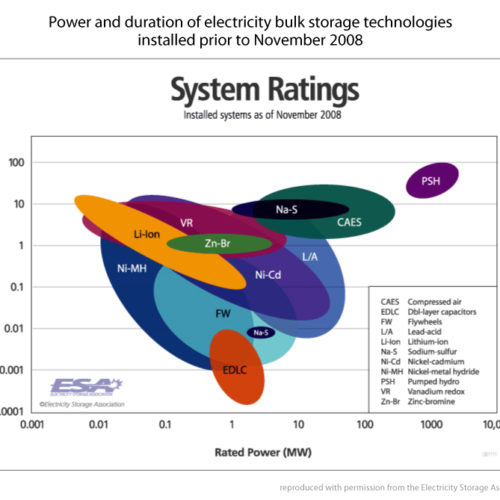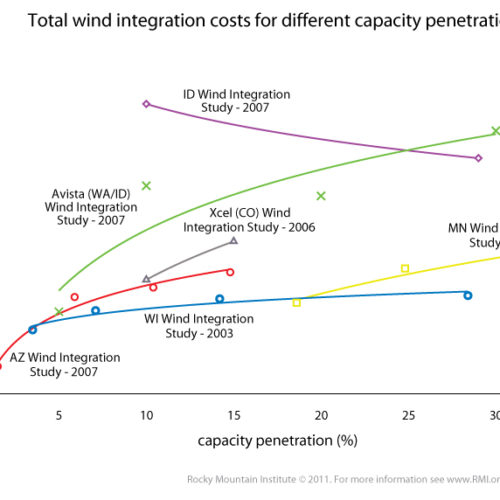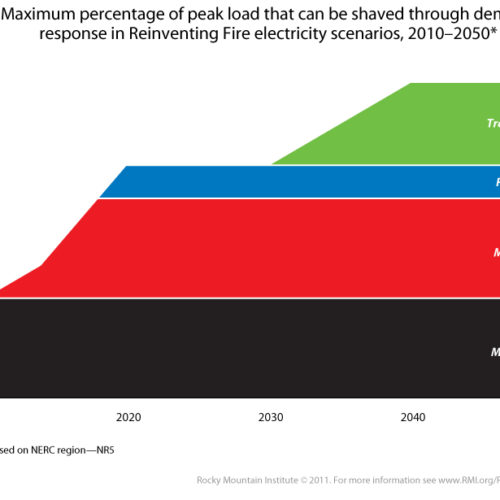U.S. installed wind and solar power capacities and projections, 1990–2050
Together, wind and solar will account for 71% of total U.S. installed capacity in 2050 in Rocky Mountain Institute’s Transform case, up from 4.4% in 2010. Along with hydro, geothermal, and biomass, renewables will meet more than 80% of 2050 U.S. electricity demand.
Sources: Ackerman, Thomas, and Poul Erik Morthorst. 2005. “Economic Aspects of Wind Power in Power Systems.” In Wind Power in Power Systems, 384-410. England: John Wiley and Sons, Ltd.
Exeter Associates, K. 2007. Review of International Experience Integrating Variable Renewable Energy Generation. California Energy Commission.
GE Energy. 2010. Western Wind and Solar Integration Study. Prepared for National Renewable Energy Laboratory.
Terra Magnetica. 2010. “Siemens Launches Permanent Magnet-Based Gearless Wind Turbine”. April 25.
U.S. Energy Information Administration. 2010. "Electric Power Annual 2009". Washington, D.C.: U.S. Department of Energy, November 23.
Wiser, Ryan, and Mark Bolinger. 2011. 2010 Wind Technologies Market Report. Lawrence Berkeley National Laboratory, June.
Xcel Energy. 2010. “Xcel Energy’s Wind Energy Program.” Presented to Wind Energy Prediction - Research and Development Workshop, May 11.
